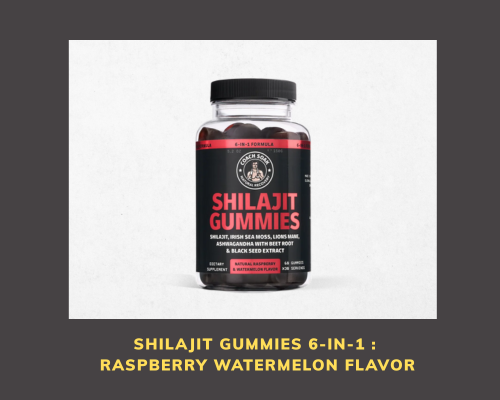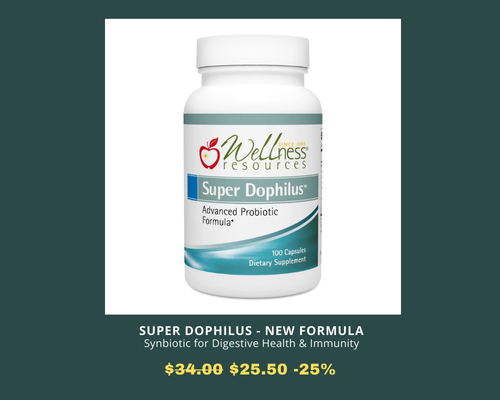Introduction: The Quest for Timeless Skin
Every individual harbors a desire for skin that defies the relentless march of time—skin that remains smooth, plump, and resilient. While the process of aging is an inherent biological reality, the aspiration to maintain youthful vitality is a universal pursuit. For decades, Vitamin C has been lauded as a cornerstone of dermatological care, celebrated primarily for its potent antioxidant properties and its indispensable role in collagen synthesis. However, recent groundbreaking scientific inquiry has unveiled an even more profound secret: Vitamin C possesses the remarkable ability to actively influence the very “youth genes” within our skin, offering a revolutionary paradigm for combating age-related thinning at a fundamental, genetic level.
This comprehensive report will delve deeply into the sophisticated science underpinning this exciting discovery, elucidating Vitamin C’s multifaceted benefits for skin health. Furthermore, it will provide practical guidance on selecting and applying the most effective Vitamin C formulations, culminating in a holistic perspective on integrating this powerful nutrient into a comprehensive anti-aging strategy.
1. Beyond Antioxidants: The Epigenetic Revolution of Vitamin C
Understanding Age-Related Skin Thinning
As the human body ages, the skin, its largest organ and primary protective barrier, undergoes a series of significant structural and functional transformations. A hallmark of this aging process is the progressive thinning of the epidermis, the outermost protective layer. This thinning is accompanied by a marked decline in the skin’s inherent regenerative capacity. At a microscopic level, the amount of elastic fibers, crucial for skin’s bounce and recoil, diminishes, and existing fibers become fragmented. Concurrently, collagen fibers, which form the robust scaffolding of the dermis, become thinner, more widely spaced, and their organized arrangement is disrupted.
A key factor contributing to this degradation is the decreased production of collagen by fibroblasts, the cells responsible for synthesizing connective tissue. Simultaneously, there is an undesirable increase in the activity of metalloproteinases (MMPs), a group of enzymes that actively break down collagen. This imbalance—reduced production and increased degradation—leads directly to the observed loss of skin firmness and elasticity, making blood vessels more visible and contributing to the overall appearance of aged, thin skin. Addressing these underlying physiological changes is paramount for any effective anti-aging intervention.
The “Youth Gene” Connection: Epigenetic Modulation
A significant leap in understanding Vitamin C’s role in skin health comes from recent groundbreaking research, notably a Japanese study published in the Journal of Investigative Dermatology. This study revealed Vitamin C’s capacity to act as a powerful epigenetic modulator. Epigenetics refers to changes in gene expression—the process by which genetic information is translated into functional products like proteins—without altering the underlying DNA sequence itself. This means Vitamin C can influence which genes are “turned on” or “turned off,” thereby directly impacting cellular function and regeneration.
To investigate this profound effect, researchers utilized human epidermal equivalents, which are meticulously crafted laboratory models designed to closely mimic the structure and function of real human skin. This methodological choice is particularly significant because it allowed for the observation of Vitamin C’s direct cellular impact in a controlled environment, isolating its effects from the complex systemic variables present in a living organism. Upon treatment with Vitamin C, these skin models exhibited a remarkable thickening of the viable keratinocyte layers. Keratinocytes constitute approximately 90% of the epidermal cells and are responsible for forming the skin’s protective barrier. Further evidence of this enhanced proliferation was the elevated number of Ki-67-positive cells, a widely recognized nuclear marker of active cell division. This quantifiable biological marker unequivocally demonstrated that Vitamin C was not merely improving the health of existing cells, but actively stimulating the creation of new ones, a fundamental process required to counteract age-related thinning and achieve true tissue regeneration.
The Molecular Switch: TET Enzymes and DNA Demethylation
The precise molecular mechanism through which Vitamin C reactivates these “youth genes” centers on its promotion of DNA demethylation. DNA methylation involves the covalent addition of methyl groups, primarily to cytosine residues within CpG dinucleotides, acting as an epigenetic mark that typically silences gene expression, effectively turning genes “off.” By facilitating the removal of these methyl groups, Vitamin C effectively reverses this gene silencing, allowing transcriptionally dormant genes to become active and produce their necessary proteins.
Crucially, Vitamin C sustains the catalytic activity of TET (ten-eleven translocation) enzymes, which are pivotal epigenetic modifiers. These enzymes initiate the DNA demethylation process by oxidizing 5-methylcytosine (5-mC) into 5-hydroxymethylcytosine (5-hmC). The remarkable aspect of Vitamin C’s involvement lies in its role as a potent reducing agent. TET enzymes require iron in its Fe2+ (ferrous) state to function. During the demethylation reaction, this Fe2+ is oxidized to Fe3+ (ferric), which can render the enzyme inactive. Vitamin C steps in by donating electrons to convert Fe3+ back to Fe2+, effectively “recharging” the TET enzymes. This continuous regeneration cycle is vital for sustained DNA demethylation and ongoing gene activation in keratinocytes. The indispensable role of TET enzymes in this pathway was unequivocally confirmed when their experimental blockage reversed the observed effects of Vitamin C on skin thickening and gene activation.
Genome-wide methylation profiling, a sophisticated technique used to map DNA methylation patterns across the entire genome, revealed over 10,000 differentially hypomethylated regions (areas that lost methyl groups) in epidermal cells treated with Vitamin C. This extensive demethylation correlated with a dramatic upregulation—ranging from 1.6- to an astonishing 75-fold—in 12 critical genes directly involved in cell cycle progression and proliferation. Specific genes such as
DLX5, CXCL14, and EFNA1, which are known to promote keratinocyte growth and the organized structure of the skin, showed clear and significant upregulation. This widespread and powerful genetic influence suggests a comprehensive “reset” of the skin’s proliferative pathways, indicating a more fundamental impact than previously understood. This detailed understanding of Vitamin C’s genetic influence positions it not merely as a protective or reparative agent, but as a true cellular rejuvenator, opening doors for therapeutic applications beyond purely cosmetic anti-aging, including conditions characterized by epidermal thinning or impaired regeneration.
2. The Enduring Power of Vitamin C: Classic Skin Benefits
Collagen Catalyst and Structural Support
Beyond its newly discovered epigenetic role, Vitamin C remains an indispensable nutrient for maintaining healthy, youthful skin due to its well-established and multifaceted involvement in collagen synthesis. Collagen, the most abundant protein in human skin, forms a robust scaffolding that provides its structure, firmness, and elasticity.
Vitamin C serves as an essential cofactor for key enzymes, specifically prolyl and lysyl hydroxylase, which are crucial for the cross-linking and stabilization of collagen fibers. This cross-linking process is vital for the strength, integrity, and proper organization of the collagen network, ensuring the skin remains firm and resilient. Furthermore, Vitamin C directly activates transcription factors involved in collagen synthesis and stabilizes pro-collagen messenger RNA (mRNA), which regulates the production of Type I and III collagen. This means it influences both the initiation of collagen production and the stability of the genetic instructions for its creation.
Adding to this, Vitamin C increases the gene expression and synthesis of tissue inhibitor of MMP-1 (TIMP-1), thereby decreasing the activity of metalloproteinases (MMPs) that break down collagen. This dual action—actively boosting collagen production while simultaneously preventing its degradation—is crucial for maintaining a robust and healthy dermal matrix.
Objective clinical evidence, derived from high-frequency ultrasonographic data, has confirmed that topically applied Vitamin C significantly increases collagen synthesis, leading to improved skin elasticity and a reduction in fine wrinkles. This was visibly observed as a significant increase in high echogenic pixels (HEP) and medium echogenic pixels (MEP), which are indicative of mature collagen and protein synthesis, alongside a concomitant decrease in low echogenic pixels (LEP), which signify collagen degeneration and dermal changes. This quantifiable evidence demonstrates that Vitamin C promotes not just more collagen, but
functional collagen that contributes to improved skin elasticity and reduced wrinkles. Notably, these improvements in collagen density and skin elasticity were observed across various age groups, being particularly prevalent and statistically significant in individuals aged 20-35 and over 50. This broad utility suggests that Vitamin C acts as a preventative measure and optimiser in younger skin, while serving as a more profound restorative and rejuvenating agent in mature skin.
Shield Against Environmental Damage: Potent Antioxidant & Photoprotection
Our skin, functioning as the body’s primary protective barrier, is in constant interaction with environmental aggressors such as ultraviolet (UV) radiation, atmospheric pollution, and cigarette smoke. These external factors induce the generation of reactive oxygen species (ROS), commonly known as free radicals, which cause oxidative stress, leading to cellular damage, inflammation, and accelerated skin aging. The continuous generation of these ROS means the skin is under perpetual assault, necessitating a consistent and robust antioxidant defense.
Vitamin C stands as one of the most abundant and potent water-soluble antioxidants naturally present in human skin. It primarily functions within the aqueous compartments of cells, safeguarding the skin by sequentially donating electrons to neutralize these harmful free radicals. A remarkable characteristic of Vitamin C is its ability to be regenerated from its oxidized forms back to its active state by the enzyme dehydroascorbic acid reductase in the presence of glutathione, ensuring sustained antioxidant activity. This means it offers continuous protection, not just a fleeting neutralization.
Beyond direct free radical scavenging, Vitamin C offers significant photoprotection, guarding against photoaging (premature aging due to sun exposure), UV-induced immunosuppression, and even photocarcinogenesis (the development of skin cancer from UV radiation). Studies have shown it inhibits the activation of AP-1, a transcription factor that upregulates MMP production and subsequent collagen damage caused by UV exposure.
Furthermore, Vitamin C works synergistically with other powerful antioxidants like Vitamin E, with Vitamin C serving as the primary replenisher of Vitamin E, thereby extending its protective capacity. The combination of Vitamin C, Vitamin E, and Ferulic Acid has been demonstrated to provide enhanced photoprotection, significantly reducing UV-induced damage and preventing cutaneous premature aging from outdoor stressors. This synergy is not merely additive; these ingredients often work on different types of free radicals or stabilize each other, leading to a significantly enhanced and broader-spectrum protective effect. For optimal defense against the “exposome” – the sum of environmental exposures – multi-ingredient formulations containing these synergistic antioxidants are superior, providing a more robust shield against environmental damage.
Brightening and Evening Skin Tone
Vitamin C is highly effective in addressing hyperpigmentation, including dark spots and sun spots, and promoting a more even, radiant complexion. It achieves this primarily by inhibiting the enzyme
tyrosinase, which is essential for the production of melanin, the pigment responsible for skin color. Tyrosinase is the rate-limiting enzyme in the melanin synthesis pathway. By directly inhibiting this enzyme, Vitamin C prevents the overproduction of melanin, which is the primary cause of dark spots and uneven tone. This targeted biochemical intervention progressively diminishes excessive pigment deposits, leading to a visible reduction in dark spots and a more uniform skin tone.
Furthermore, its potent antioxidant properties also play a crucial role by protecting the skin from further UV damage, which is a major trigger and exacerbator of hyperpigmentation. This dual action—directly inhibiting existing melanin production and simultaneously preventing new pigmentation—makes Vitamin C a comprehensive and proactive solution for uneven skin tone, addressing both the cause and the manifestation of hyperpigmentation for a more complete and lasting improvement in skin complexion.
3. Navigating Your Vitamin C Journey: Practical Application Guide
Topical vs. Dietary: Why Direct Application Matters
While Vitamin C is undeniably vital for overall systemic health and for collagen formation throughout the body, humans, unlike many other animal species, lack the enzyme necessary to synthesize it internally. Consequently, we must obtain this essential nutrient through our diet. However, for achieving targeted skin benefits, particularly for anti-aging, rejuvenation, and addressing specific dermatological concerns such as thinning or hyperpigmentation, direct topical application is paramount.
A common misconception is that simply consuming Vitamin C-rich foods is sufficient for significant skin improvements. However, only a small fraction of orally supplemented Vitamin C becomes biologically available and active in the skin, primarily due to limited bioavailability and the body’s prioritization of other vital organs. The body allocates Vitamin C first to essential systemic functions like immune support and wound healing. Therefore, to achieve the high local concentrations necessary to trigger the profound epigenetic changes and robust collagen synthesis observed in recent studies, direct topical application ensures that significantly higher concentrations of Vitamin C are delivered precisely to the epidermal and dermal layers where they can exert their profound effects. This distinction is crucial for guiding individuals toward truly effective skincare solutions and managing expectations regarding the benefits derived from dietary intake versus topical application.
Choosing the Right Form: L-Ascorbic Acid vs. Derivatives
The effectiveness and tolerability of a Vitamin C product are heavily influenced by the specific form of Vitamin C it contains and its overall formulation.
- L-Ascorbic Acid (LAA):
- Advantages: L-Ascorbic Acid is recognized as the purest, most biologically active, and most potent form of Vitamin C. Its high bioavailability and rapid skin absorption lead to the fastest and most visible results.
- Disadvantages: LAA is notoriously unstable. It rapidly degrades and oxidizes upon exposure to light, air, and heat, resulting in a significant loss of efficacy and often a visible change in color (turning yellow, orange, or brown). To maintain optimal stability, LAA formulations typically require a low, acidic pH (2.5-3.5), which can cause irritation, stinging, or redness, especially for individuals with sensitive skin or when used at higher concentrations.
- Stable Derivatives: To circumvent LAA’s inherent instability and potential for irritation, several Vitamin C derivatives have been developed. These are generally gentler and more stable in formulations, but they often require conversion by the skin’s enzymes into active L-Ascorbic Acid, which can result in slower or less pronounced results compared to pure LAA.
- Magnesium Ascorbyl Phosphate (MAP): A highly stable, water-soluble derivative that resists oxidation well. It is effective for collagen production, skin brightening, and UV protection. MAP is approximately half as potent as LAA (1% MAP is roughly equivalent to 0.58% LAA), meaning a concentration of around 10% MAP is typically needed to achieve the equivalent of 5% LAA. MAP is often a preferred choice for individuals with sensitive skin.
- Ascorbyl Glucoside (L-VCG): A stable, water-soluble form combined with glucose. It offers a slow-release mechanism, gradually converting into LAA once absorbed into the skin. This makes it ideal for long-term collagen synthesis and brightening effects, and it is generally gentle enough for sensitive skin. Similar to MAP, it is approximately half as potent as LAA (1% AG ≈ 0.52% LAA), requiring around 10% AG for a 5% LAA equivalent.
- THD Ascorbate (Tetrahexyldecyl Ascorbate): A highly stable, oil-soluble form of Vitamin C. Its oil solubility allows it to readily permeate cells and convert to LAA. It is significantly less potent than LAA (1% THD ≈ 0.16% LAA), meaning a concentration of at least 60% THD would be needed to achieve a 5% LAA equivalent.
Concentration Recommendations and Application Tips
When selecting a Vitamin C serum, concentration is a key factor. For individuals with sensitive skin or those new to Vitamin C, starting with a low concentration (10% or below) is recommended to assess skin tolerance before gradually increasing. Experienced users seeking more pronounced results may opt for higher concentrations, with 15% or more of pure Ascorbic Acid being effective for persistent skin concerns like hyperpigmentation and post-inflammatory redness. Research indicates that even concentrations as low as 0.6% possess antioxidant and reparative properties. For rosacea-prone or highly sensitive skin, Vitamin C esters like Ascorbyl Glucoside are often preferred due to their gentler nature.
For optimal results, Vitamin C should be applied daily. Morning application is often recommended as it provides antioxidant protection against UV damage throughout the day. However, new data also suggests that applying antioxidants like Vitamin C in the evening can aid in fighting post-sun skin damage. Vitamin C absorbs most effectively into the skin after cleansing, typically before heavier creams and oils. To prevent oxidation and maintain efficacy, Vitamin C products, especially those containing L-Ascorbic Acid, should be stored in airtight, opaque containers or in capsule form, away from light and heat. Vitamin C is generally safe for use under the eyes to reduce dark circles and is often recommended by dermatologists for use during pregnancy to help prevent melasma.
While Vitamin C is compatible with many skincare ingredients, certain combinations should be approached with caution. It is generally advisable to avoid combining Vitamin C with Alpha Hydroxy Acids (AHAs), Beta Hydroxy Acids (BHAs), Salicylic Acid, Benzoyl Peroxide, or Retinol within the same application, as these may reduce its efficacy or increase irritation. Conversely, Vitamin C pairs exceptionally well with other antioxidants like Vitamin E and Ferulic Acid, which amplify its anti-aging and photoprotective benefits. It also complements hydrating ingredients such as Hyaluronic Acid and Ceramides, which can mitigate potential dryness or irritation. Peptides and Niacinamide are also beneficial partners, enhancing collagen boosting, barrier function, and overall skin health. Always conclude a morning routine with sunscreen to maximize protection against UV damage.
Potential side effects of Vitamin C serums can include temporary stinging, tingling, redness, or dryness, particularly with L-Ascorbic Acid formulations or higher concentrations. A patch test on a small, inconspicuous area of skin is always recommended before full application to gauge individual skin reaction.
Conclusion
The latest scientific advancements have profoundly reshaped our understanding of Vitamin C’s role in skin health, moving beyond its well-established antioxidant and collagen-boosting properties to reveal its remarkable capacity as an epigenetic modulator. The groundbreaking Japanese study demonstrates that Vitamin C can actively “flip” the skin’s “youth genes” by promoting DNA demethylation through the “recharging” of TET enzymes. This process leads to the significant upregulation of genes critical for keratinocyte proliferation and skin thickening, offering a direct mechanism to reverse age-related thinning at a fundamental molecular level.
Coupled with its classic benefits—acting as a vital cofactor for robust collagen synthesis, inhibiting collagen-degrading enzymes, providing potent protection against environmental oxidative stress, and effectively brightening skin tone by inhibiting melanin production—Vitamin C emerges as an indispensable cornerstone of any comprehensive anti-aging regimen. The objective clinical evidence, such as ultrasonographic data demonstrating increased collagen density, further solidifies its efficacy.
For optimal dermatological benefits, topical application of Vitamin C is paramount, as dietary intake alone provides limited bioavailability to the skin. When choosing a product, understanding the differences between potent but unstable L-Ascorbic Acid and its more stable, gentler derivatives is crucial for balancing efficacy with skin tolerability. Strategic application, appropriate concentration, and synergistic combinations with other beneficial ingredients can maximize its profound effects.
In essence, Vitamin C is not merely a cosmetic ingredient; it is a powerful biological agent capable of influencing the very genetic machinery of our skin. By integrating this multifaceted nutrient into a daily skincare routine, individuals can actively work towards maintaining skin vitality, resilience, and a visibly more youthful complexion, truly unlocking their skin’s inherent regenerative potential.












